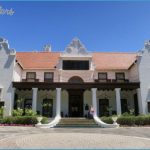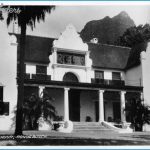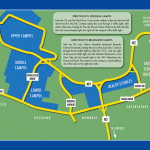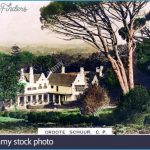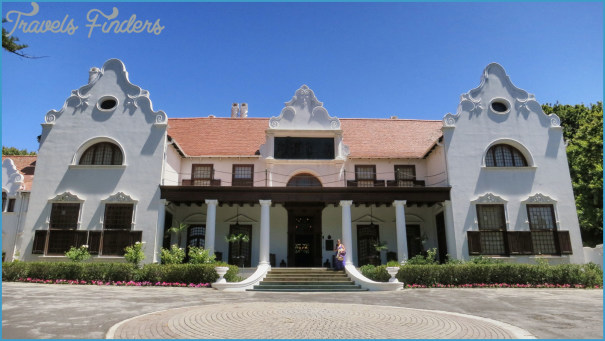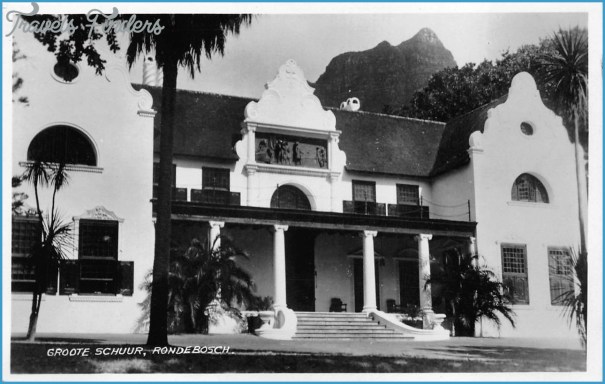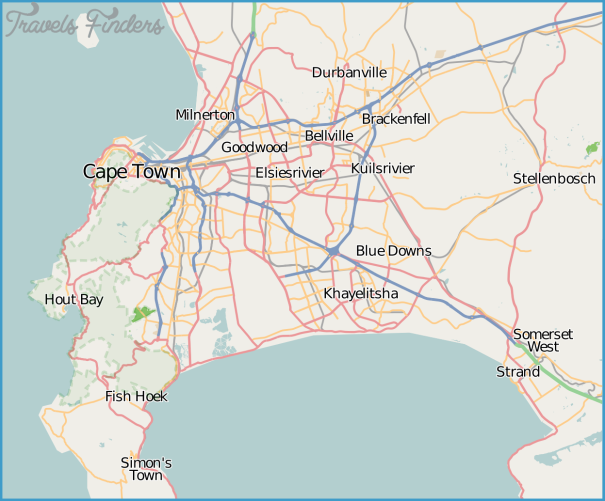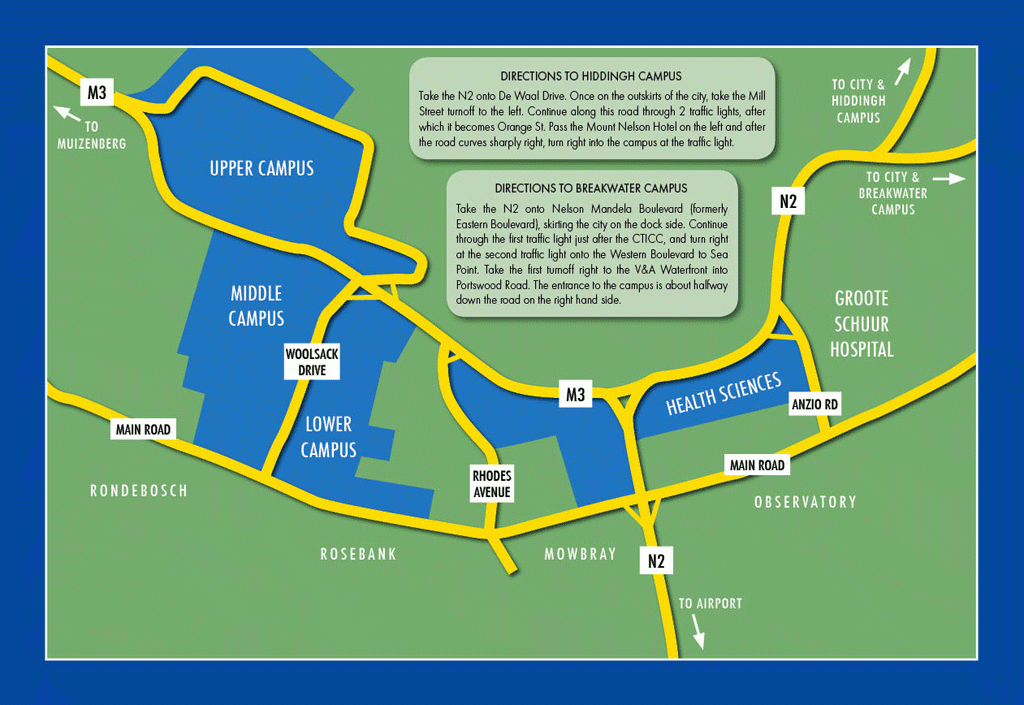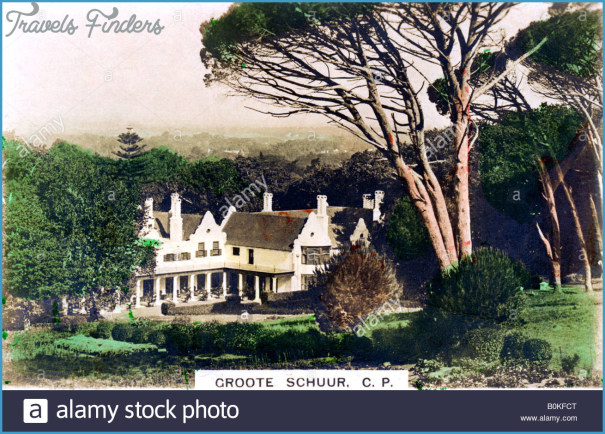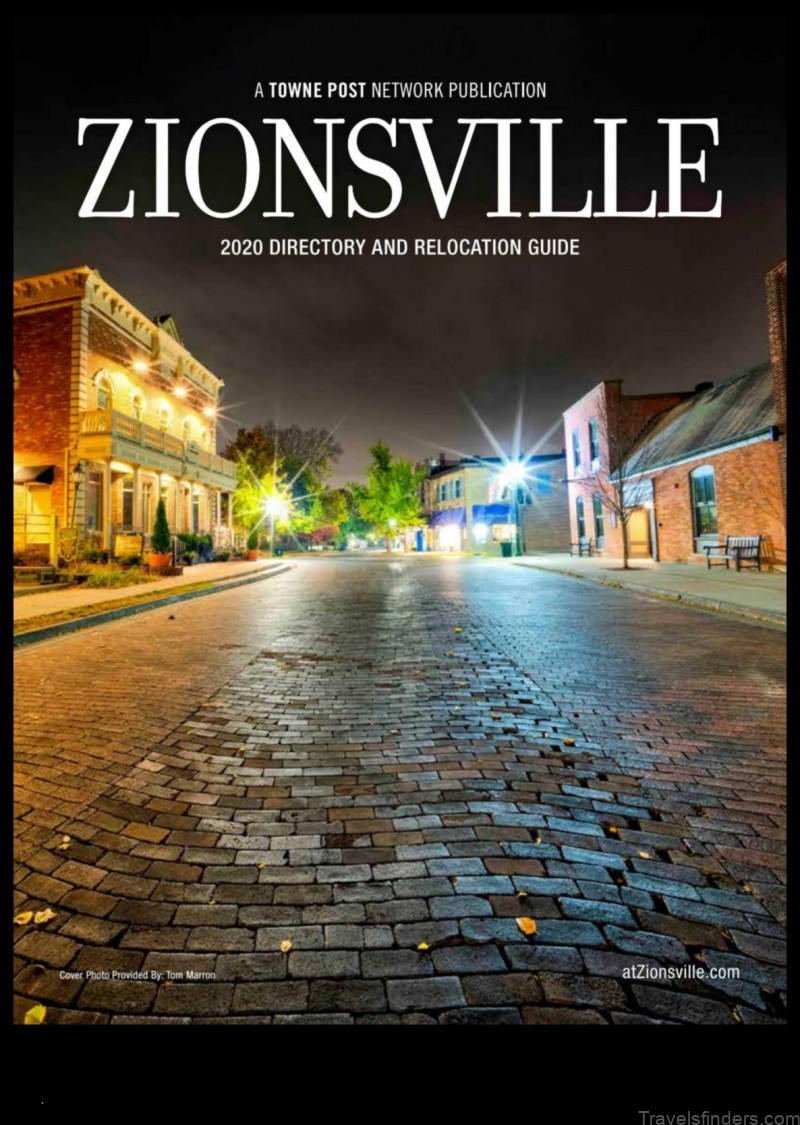The inner hall and landing for the main staircase. Baker designed the chimneypiece in the background. Sitting on the carved teak newel posts is a replica of the mysterious bird sculpture found in the Great Zimbabwe ruins, a stone original of which survives elsewhere in the house. The motif is integrated into the architecture and appears on fire screens, door handles and door fittings.
Baker’s domestic architectural legacy is nowhere more magnificent than here at Groote Schuur, the house he rebuilt for Cecil John Rhodes in 1893, in a style that gave rise to a whole new homegrown architectural idiom.
In the 1890s, the old Cape architectural vernacular, from which Groote Schuur derives its character, was far from popular, but when Baker discovered it, he loved it. ‘I carefully studied and made sketches of the architecture of the old houses. When I talked about them to my friends at the Cape, I wondered how little their beauty seemed to be known or appreciated, he wrote. In recognizing its unique character, he struck a chord with Rhodes, who asked him to work on the restoration of Groote Schuur. Baker went on to borrow elements from the local vernacular, from what he knew of the gabled buildings of Amsterdam, as well as the Flemish connections with his own home territory in England’s Kent. And he added his own inventions so that Groote Schuur is, in fact, a fantasy of Edwardian historicism.
GROOTE SCHUUR Rondebosch Cape Town Photo Gallery
When it was finished, it unleashed a flurry of copycat houses marked by double-storey, attenuated gables, barley-stick chimneys, lots of teak and even more whitewash. A whole new architectural style was spawned. Palatial when Cape Dutch buildings were not, of course it isn’t really even ‘Cape Dutch at all, but an essay in the romantic Arts and Crafts Movement that preferred vernacular styles to the prevailing industrialism, and which sanctified good craftsmanship and the use of traditional, local materials like stone and wood rather than iron and plaster. This is the building that launched Baker’s career as one of the key architects of the British Empire, ‘and it was to change the face of South African architecture for ever’, says Graham Viney in his book, Colonial Houses of South Africa.
The interiors are indebted to the architectural partnership of Ernest George and Harold Peto, where Baker worked as lead assistant between 1882 and 1887. There, emphasis was placed on the importance of working drawings, sketching tours and, above all, respect for high levels of craftsmanship. George and Peto was one of the most successful and fashionable London architectural offices. They were known for picturesque Arts and Crafts houses and their interiors rarely strayed far from a clever set of formulae. You see it all over Groote Schuur: dark panelling contrasting with stone chimneypieces, ornamental brass, white ornamental ‘strap work ceilings and stamped leather or otherwise ‘aesthetic wall coverings. Elsewhere, there are wooden overmantels, or ceilings with small gilt-edged panels between beams that rest on carved corbels. These, along with panelled rooms, floor-to-ceiling chimneypieces in carved stone, tiled inglenooks, and half-landings, are all George and Peto trademarks that were borrowed and used by Baker.
Where once house parties filled the rooms now there’s only silence, except for the ticking of the clocks and the occasional door slamming in the distance. Its collections are mostly still in situ: Rhodes had agents on the lookout for furniture, books, porcelain, silver and glassware – he particularly wanted items from the Cape. Today the house and its interior remain almost exclusively as they were in Rhodes’s day. It’s a museum and you can visit it by appointment.
The columned back stoep, above which an open balcony overlooks Devil’s Peak and the back of Table Mountain. The heavy furniture is arranged as it would have been in Rhodes’s day.
Everything in this room has the monumentality that Rhodes was after. His taste was for large and impressive pieces, and whatever he or his agents bought had to conform to this ideal.
The kitchen, an impressive, voluminous space, has the look and appeal of an Arts and Crafts room. The wall cupboard is a typical Baker detail borrowed from the Cape Dutch, although its shape and style is more pronounced than its historic prototype.
In its outward appearance, Groote Schuur is an English country house transplanted to the Cape. Even the bay window on the right has something Tudor about it. But is this house ‘Cape Dutch’, or is it simply the fantasy of Rhodes and Baker’s imaginations?
Rhodes’s marble-clad bathroom. The massive bath is fashioned out of Paarl granite, while the masseur’s table opposite is topped with marble.

